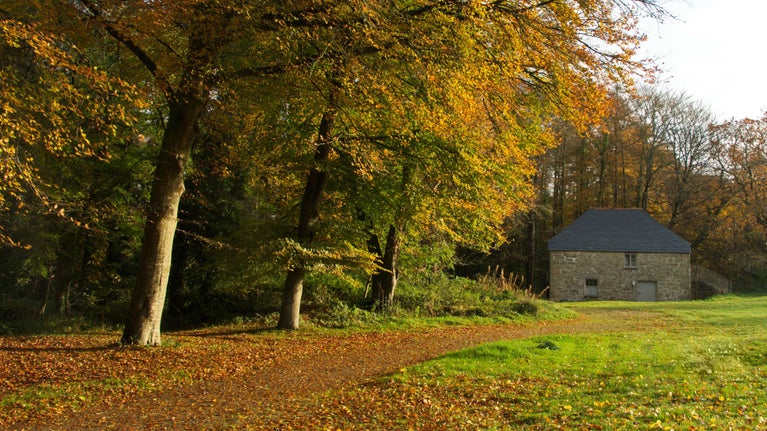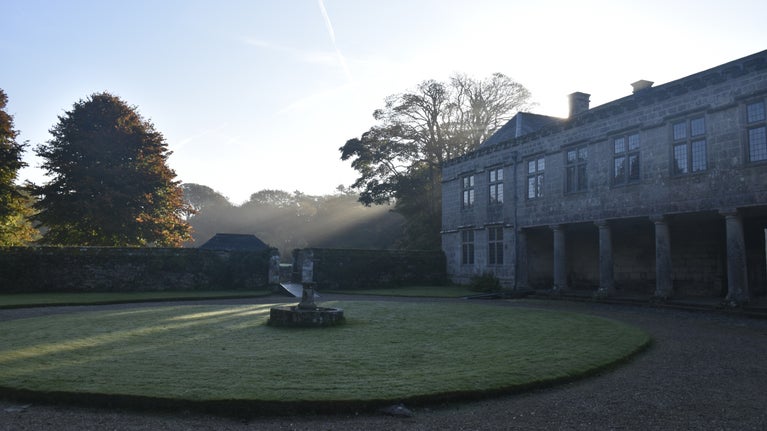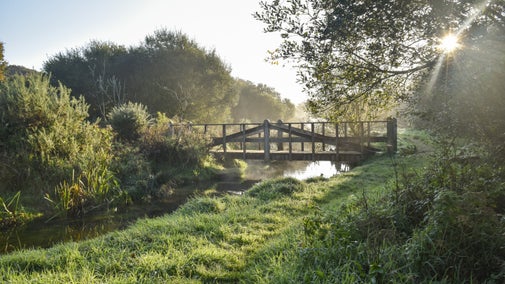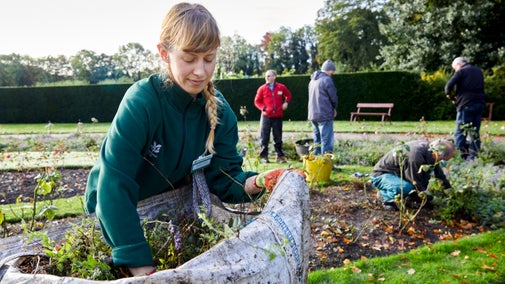
Discover more at Godolphin
Find out when Godolphin is open, how to get here, the things to see and do and more.

Visit the garden at Godolphin and discover how the original 16th-century layout is still visible today. Uncover the hidden parts of the garden and learn how the garden is planted and maintained without chemicals to help wildlife to thrive. Godolphin's garden also provides a special home to insects, such as the native Cornish black bee.
Sir Francis Godolphin was one of the most important and influential inhabitants of Cornwall when he designed and built the garden at Godolphin in 16th century. Five centuries later, much of the original layout of his ambitious scheme survives, making this garden one of national importance.
The garden team at Godolphin preserve its unique character, managing the garden gently to protect archaeology and its status as a Scheduled Monument. The garden is maintained without chemicals, which increases the work for gardeners, but benefits the insects, birds, and bats who live here.
Autumn at Godolphin bursts into life as the orchard transforms into a tapestry of colour. Native Cornish apple trees hang heavy with ripening fruit, while the garden and surrounding estate are cloaked in the warm, golden hues of the season.
Towering above it all, the ancient sycamores, some over 200 years old, stand as silent witnesses to centuries of change, their leaves rustling with stories of the past.

Of the original nine-compartment Tudor design, three remain in the Side Garden. They provide a wealth of traditional, seasonal planting and in the summer the herbaceous borders are full of height, colour and scent.
Plants like aquilegia, white foxgloves, lupin and ox-eye daisy provide a food source for bees, butterflies and other pollinating insects. Take a seat on one of the bespoke benches under the trees and enjoy watching the varied insect life and lsitening to the bird song.
Head up to the dry ponds, which were once breeding ponds for fish and filled by the streams running off from Godolphin Hill. Water management was very popular in the 16th century so having your own pond was the height of fashion.
The original steps can be used to reach the former pond from the Side Garden.
This area is home to the first native bee haven on a National Trust site in the UK. We’re supporting a project to save the Cornish remnants of the native black honey bee. You might see the bee keepers inspecting the hives during your visit.
The Orchard has been replanted with Cornish varieties of apples, alongside pears, a medlar, crab apples, white mulberries and cherries.
If you visit in spring, the trees will be filled with blossom and the sound of buzzing bees. Then, from September to October, they’ll be laden with juicy fruit. Fallen apples are placed at the back of the borders to provide food for birds and other wildlife.

Step into the King's Garden from the folly passage way and explore the 16th-century privy garden. The term ‘privy’ means that the garden was private to the occupants of that room.
The King's Garden had many uses over the years, from being a private formal garden in Tudor times to a vegtable garden.
Today, everyone can enjoy this walled garden with cloud-like box hedges following neat paths. When the sun shines it becomes a suntrap where you can breathe in the perfume of highly scented roses and lavender when they bloom.
From the King's Garden, venture into the King's Room, where Charles II reputedly stayed whilst fleeing Parliamentarian forces in 1646.
See the large carved oak chimneypiece overmantel which commemorates the marriage of William Godolphin and Thomasine Sidney in 1604. Paint has been removed from the surface of the chimneypiece, revealing the carving in greater detail. It’s supported by four ornately carved columns. Take a closer look at the top of the columns to see shapes that resemble two hearts, symbolising love in the marriage.
Make sure to visit the newly refurbished potting shed in the Side Garden to discover more about the long and complex history of the gardens at Godolphin, and how its changed over time.
Plus find out more about how our gardeners are adopting a chemical free approach to gardening to create a haven for native wildlife and to protect the garden's status as a Scheduled Monument.
Discover more about Godolphin's farming heritage by visiting the outbuildings.

Find out when Godolphin is open, how to get here, the things to see and do and more.
Discover the countryside and find out how a herd of cows can help butterflies to thrive. Take walks with far reaching views across the Cornish coast and discover local legend in this ancient landscape.

Added to the UNESCO World Heritage list, Godolphin has special status. Find out about the people who lived here and how they created their wealth from the estate.

Godolphin is a two pawprint rated place. Take a gentle walk around the garden or head up to Godolphin hill for expansive country views. Find out all you need to know to enjoy your time here with your dog.

Discover our gardeners’ top tips so you can make the most of your garden, plot or window box.

From 18th-century water gardens and Arts and Crafts landscapes to intimate woodland gardens, there are so many places to discover.

Cornwall is not only home to dramatic coastline and countryside, but also a number of beautiful and historic gardens and parks. Discover colour and interest at hidden gems across Cornwall with your family.
